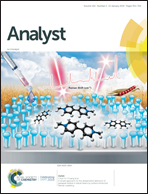A review of methods for the detection of pathogenic microorganisms
Abstract
The testing and rapid detection of pathogenic organisms is a crucial protocol in the prevention and identification of crises related to health, safety and wellbeing. Pathogen detection has become one of the most challenging aspects in the food and water industries, because of the rapid spread of waterborne and foodborne diseases in the community and at significant costs. With the prospect of inevitable population growth, and an influx of tourism to certain water bodies testing will become a requirement to control and prevent possible outbreaks of potentially fatal illnesses. The legislation is already particularly rigorous in the food industry, where failure to detect pathogenic materials represents a catastrophic event, particularly for the elderly, very young or immune-compromised population types. In spite of the need and requirement for rapid analytical testing, conventional and standard bacterial detection assays may take up to seven days to yield a result. Given the advent of new technologies, biosensors, chemical knowledge and miniaturisation of instrumentation this timescale is not acceptable. This review presents an opportunity to fill a knowledge gap for an extremely important research area; discussing the main techniques, biology, chemistry, miniaturisation, sensing and the emerging state-of-the-art research and developments for detection of pathogens in food, water, blood and faecal samples.

- This article is part of the themed collection: Recent Review Articles


 Please wait while we load your content...
Please wait while we load your content...